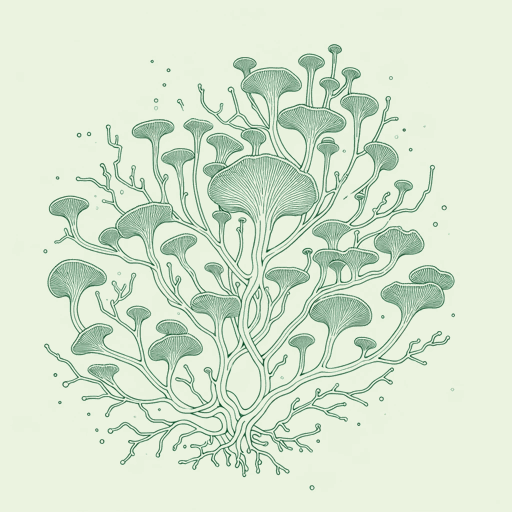44 pages • 1 hour read
Merlin SheldrakeEntangled Life: How Fungi Make Our Worlds, Change Our Minds & Shape Our Futures
Nonfiction | Book | Adult | Published in 2020A modern alternative to SparkNotes and CliffsNotes, SuperSummary offers high-quality Study Guides with detailed chapter summaries and analysis of major themes, characters, and more.
Chapters 3-4Chapter Summaries & Analyses
Chapter 3 Summary: “The Intimacy of Strangers”
Chapter 3 delves into the history of lichens, a type of composite organism of which fungi make up one element. Lichenology shook scientific orthodoxy in the 19th century when Simon Schwendener discovered that lichens were a partnership between a fungus and one alga. The two species grew together into distinct physical forms, with the fungus providing shelter and pulling nutrients from the soil, while the alga provided photosynthetic nutrients. Schwendener’s idea was discounted for over a decade, as it went against the prevailing Darwinian theory that species diverged as a result of evolution. Convergent species were seen as preposterous. By the late 19th century, though, symbiosis had become a widely accepted biological theory, and lichens were its poster child. In the 20th century, Lynn Margulis took this theory further when she proposed the endosymbiotic theory, which speculates that major evolutionary turning points often resulted from organisms combining, rather than dividing.
Since Schwendener, lichenologists have found that lichens contain far more than two symbiotic organisms. Sheldrake describes them as entire micro-ecosystems in which multiple kinds of fungi, algae, and bacteria live next to, inside of, and surrounding one another, each contributing something to help the 







Featured Collections
Appearance Versus Reality
View Collection
Climate Change Reads
View Collection
Creative Nonfiction
View Collection
Earth Day
View Collection
New York Times Best Sellers
View Collection
Popular Book Club Picks
View Collection
Science & Nature
View Collection
SuperSummary Staff Picks
View Collection
YA Nonfiction
View Collection
